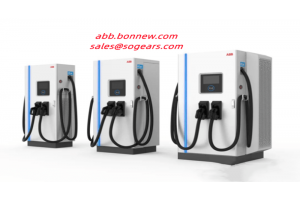
Plastic case circuit breakers are used as overload and short circuit protection appliances in low-voltage power distribution systems and motor protection circuits. When the rated current is below 600A, and the short-circuit current is not large, the plastic case circuit breaker can be selected; therefore, the plastic case circuit breaker is widely used. The product.

How Molded Case Circuit Breakers Work
There are two types of interlocking devices: mechanical interlocking and electrical interlocking. The working principle is:
1. The mechanical interlocking device generally uses a wire rope or a lever mechanism to ensure that the operating handle of the isolating switch cannot move before the circuit breaker cuts off the power supply with the change of the mechanical position (multi-function program lock can also be used).
2.Electrical interlocking device There are generally two interlocking methods for electrical interlocking. One is to control the handle of the isolation switch through the linkage auxiliary contact (normally open or normally closed) on the operating mechanism. When the circuit breaker is not disconnected, the operating handle of the isolating switch cannot move.
Another kind of electrical interlock is to use the linkage auxiliary contact (normally open or normally closed) on the distance switch operating mechanism to control the circuit breaker. When the handle of the isolating switch is pulled, the linkage auxiliary contact (normally open or normally closed) makes the circuit breaker act to cut off the circuit, thereby preventing the accident of pulling the distance switch with load.
Characteristics of Molded Case Circuit Breakers
- Rated ultimate short-circuit breaking capacity lcu: There are two breaking capacity indicators of circuit breakers: rated ultimate short-circuit breaking capacity lcu and rated operating short-circuit breaking capacity Ics. As a characteristic parameter, lcs does not simply consider the breaking capacity of the circuit breaker, but as a breaking index, that is, after breaking several short-circuit faults, it can still ensure its normal operation.

⒉ Current limiting breaking capacity: When the circuit breaker is short-circuited, the contacts are quickly opened to generate an arc, which is equivalent to adding a rapidly increasing arc resistance in series to the line, thereby limiting the increase of the fault current. The shorter the breaking time of the circuit breaker, the closer the Ics is to the lcu, the better the current limiting effect, and the adverse effects of the electromagnetic effect, electrodynamic effect and thermal effect caused by the short-circuit current on the circuit breaker and electrical equipment can be greatly reduced, and the circuit breaker can be extended. service life.
- Short-circuit protection: Short-circuit protection is short-circuit instantaneous tripping. It is necessary to pay attention to adjust the setting value of protection in time after the load changes, to prevent frequent tripping if the setting value is too small, which will affect the power supply quality, or the setting value is too large, so that the line and equipment cannot be effectively protected.
- Overload delay protection: Overload delay protection means that the load current exceeds the limited range of the equipment and there is a danger of burning the equipment, and the protection device can cut off the power supply within a certain period of time. Overload has a process of heat accumulation, and the protection action does not need to be too fast. For short-time overcurrent, the protection should not operate.
- Isolation function: The isolation function is to require that the leakage current after the circuit breaker is disconnected will not cause harm to people and equipment.
After multiple short-circuit trips, the switching performance decreases and the leakage current increases. For the human body, the leakage current below 30mA is a safe leakage current, but in a harsh environment, if the leakage current exceeds 300mA for more than 2 hours, it may damage the insulation and cause a phase-to-ground short circuit and cause a fire.




